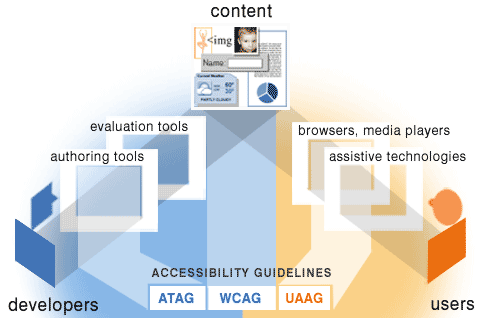 Skip to
content
Skip to
content- | To change text size or colors
WAI: Strategies, guidelines, and resources to make the Web accessible to people with disabilities
See the WAI Handout and WAI Flyer page for other handouts, print versions of this handout, and additional information.
The Web Accessibility Initiative (WAI) works with organizations around the world to develop strategies, guidelines, and resources to help make the Web accessible to people with disabilities. WAI is part of the World Wide Web Consortium (W3C) that develops Web standards for HTML, XML, CSS, etc. See www.w3.org/WAI/about.html
The WAI home page www.w3.org/WAI/ has announcements, highlights, and links to documents such as:
 Essential Components of Web Accessibility - shows how Web accessibility depends on several components of Web development and interaction working together and shows the relationship between the WAI guidelines:
Essential Components of Web Accessibility - shows how Web accessibility depends on several components of Web development and interaction working together and shows the relationship between the WAI guidelines:





See www.w3.org/WAI/flyer/handout2007a for updates since 21 March 2008.